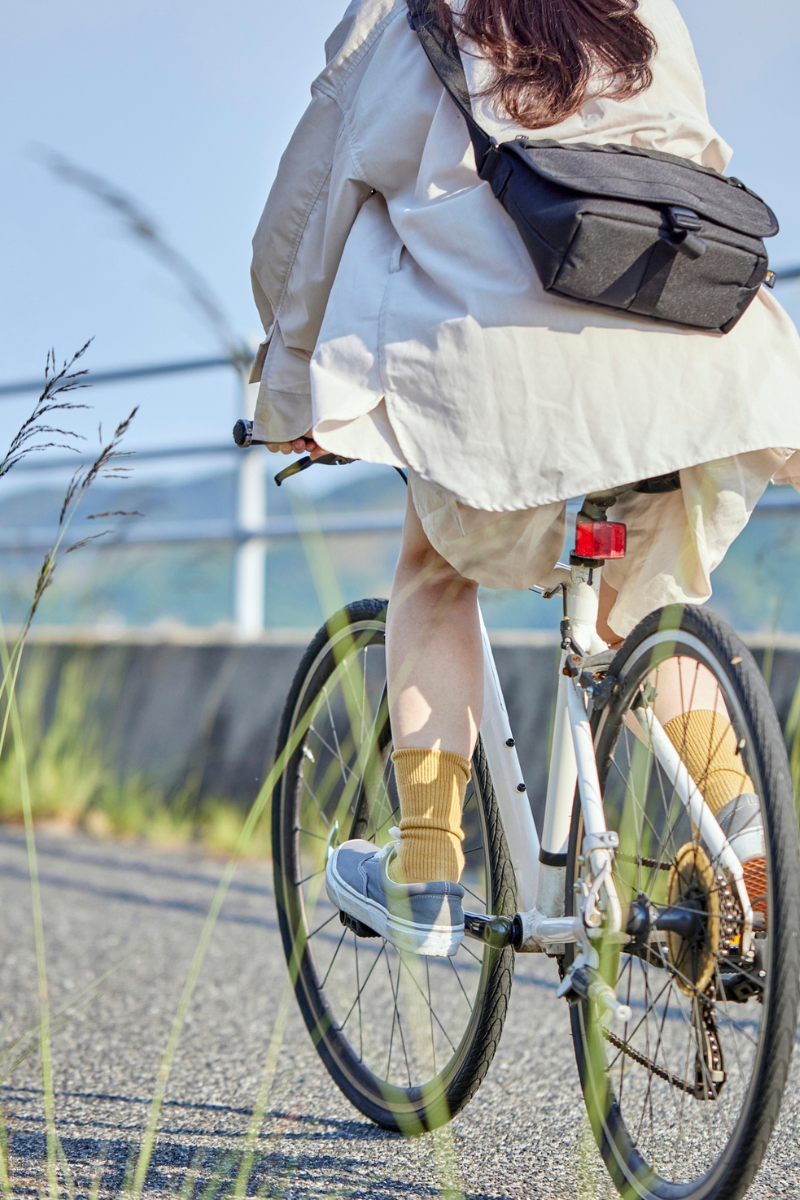Beyond Bike Lanes: Addressing Ann Arbor's Complex Transportation Needs

written by Greg L. Hughes
Ann Arbor's cycling infrastructure has sparked passionate community discussions that go far deeper than paint on pavement. As our city continues to expand bike lanes and protected cycling infrastructure, we're hearing from diverse voices about how these changes affect different types of road users — from families with young children to casual cyclists who feel intimidated by current options.
Who Uses Our Streets?
Ann Arbor's streets serve a remarkably diverse mix of users, each with different needs and comfort levels. There are confident cyclists who navigate busy intersections alongside cars, but also parents concerned about their teenagers biking safely to school. There are casual riders who want to enjoy recreational cycling without feeling pressured to use infrastructure designed for commuters.
Recent data shows that bicycle-car and bicycle-pedestrian crashes have increased to around 75 per year, highlighting the ongoing tensions between different transportation modes.[3] The challenges extend beyond safety to implementation: even designated cycling space faces ongoing conflicts, as evidenced by the need for enforcement efforts to keep bike lanes clear.[3]
Current bike lane infrastructure primarily serves those comfortable riding at street level alongside vehicle traffic. But what about the "interested but concerned" cyclists who want safer options?

The Gap Between Infrastructure and Users
Walk through Ann Arbor and you'll notice something revealing: people cycling on sidewalks parallel to newly installed bike lanes. This isn't necessarily about rule-breaking — it's about comfort and perceived safety. While bike lanes reduce conflicts with cars, they don't eliminate the anxiety many people feel about riding at the same grade as fast-moving traffic.
Implementation challenges add to this confusion. As noted by an Ann Arbor resident who both drives and bikes regularly, the intersection treatments create confusion because cyclists in protected bike lanes must "follow the crosswalk signs" rather than standard traffic signals, which "confuses a lot of people, especially cars, because they've been told all along that bikes have to follow the same laws as cars at these intersections."[2] While intersection treatments have continued to evolve, this highlights how street-level infrastructure can struggle to serve users with different comfort levels and experience.
Even where bike lanes exist, gaps in the network limit their effectiveness. A bike lane that suddenly ends at a busy intersection creates the kind of fragmented experience that discourages many potential cyclists. Ann Arbor now has 90.2 lane-miles of on-street bike lanes and 35.3 miles of shared-use paths,[1] but the question remains: is this infrastructure truly accessible to all ages and abilities?
There's an important distinction between recreational cycling infrastructure and transportation infrastructure. Transportation infrastructure needs to be efficient, well-maintained year-round, and connect to places people actually need to reach.
This becomes particularly relevant considering Ann Arbor's goal to reduce vehicle miles traveled by 50%. Achieving this requires infrastructure that can attract not just dedicated cyclists, but the much larger population of "interested but concerned" potential cyclists.

The Missing Middle
Perhaps the most telling sign of our infrastructure challenges is the "missing middle" — potential cyclists who would like to ride but find current options inadequate. These include both casual and experienced cyclists who prefer routes that separate them entirely from vehicle traffic, especially at busy intersections. They range from children and teenagers to adults who enjoy biking, but lack the comfort level of dedicated cyclists who ride everywhere regardless of infrastructure shortcomings.
Current bike lanes, even protected ones, still operate at street level. They reduce conflicts with cars but don't eliminate the psychological barrier many people feel about sharing space with fast-moving vehicles. This is where grade-separated infrastructure offers a fundamentally different solution. Rather than asking all users to adapt to street-level infrastructure, elevated crossings, specifically at busy intersections, could provide the separation that makes cycling accessible to truly all ages and abilities.
Consider families: parents might be comfortable using protected bike lanes, but feel differently about bringing young kids into those spaces during rush hour. The choice often becomes sidewalks or avoiding cycling altogether. Grade separation at key conflict points could provide the peace of mind that transforms cycling from an activity for the dedicated few to a genuine transportation option for families.
Building for Everyone
Ann Arbor's transportation future requires acknowledging how the missing middle is currently underserved. Street-level bike lanes will continue to play an important role, especially for confident cyclists.
But for the city to achieve its goal of reducing vehicle miles traveled by 50%, we need infrastructure that can attract the broader population of potential cyclists — including those currently left out of existing options.
The solution isn't abandoning current approaches, but creating a hierarchy of infrastructure that serves different users appropriately. Grade-separated infrastructure at key conflict points could anchor such a network, providing the predictable, low-stress connections that make cycling realistic for the full diversity of Ann Arbor residents.
The question isn't whether we need better cycling infrastructure — clearly we do. The question is whether we'll build infrastructure that truly serves our community's diverse transportation needs, or continue expecting everyone to adapt to solutions designed primarily for confident cyclists. The Treeline is a solution that will accommodate not only the different user needs of cyclists, but will also provide space for pedestrians with its 14-foot width. The Gateway segment, which will link downtown to the Border to Border Trail, will specifically address concerns at a critical pressure point through its signature Gateway Bridge.
The Treeline Conservancy is working with Ann Arbor City Council on the next phase of development for the Gateway segment. Learn more about supporting this transformative infrastructure project at thetreeline.org/support

Sources
- City of Ann Arbor Biking Information. Retrieved from: https://www.a2gov.org/engineering/transportation/biking/
- "Moving beyond Gold-Level: Ann Arbor cyclists want better biking infrastructure." Michigan Daily, March 8, 2022.
- "City Council Votes to Crack Down on Scofflaws Parking in Bike Lanes–Including Delivery Drivers." The Ann Arbor Independent, March 8, 2023.
Blog Library
Learn more about the Treeline Project, initiatives, and our team members.

The Treeline: Bridging the City of Ann Arbor
.png)
Ann Arbor's Transportation Future: What Bike Infrastructure Rankings Tell Us
.png)